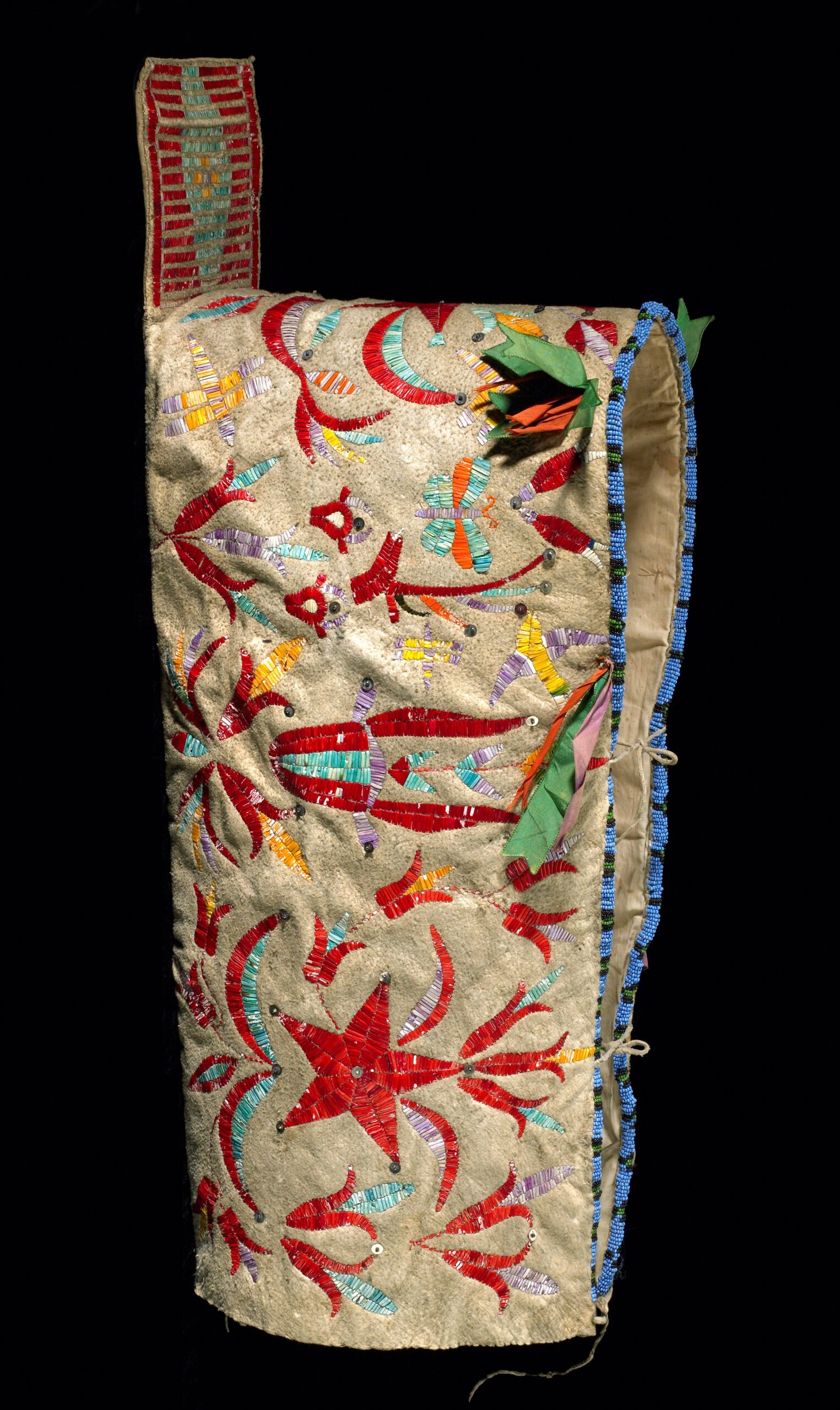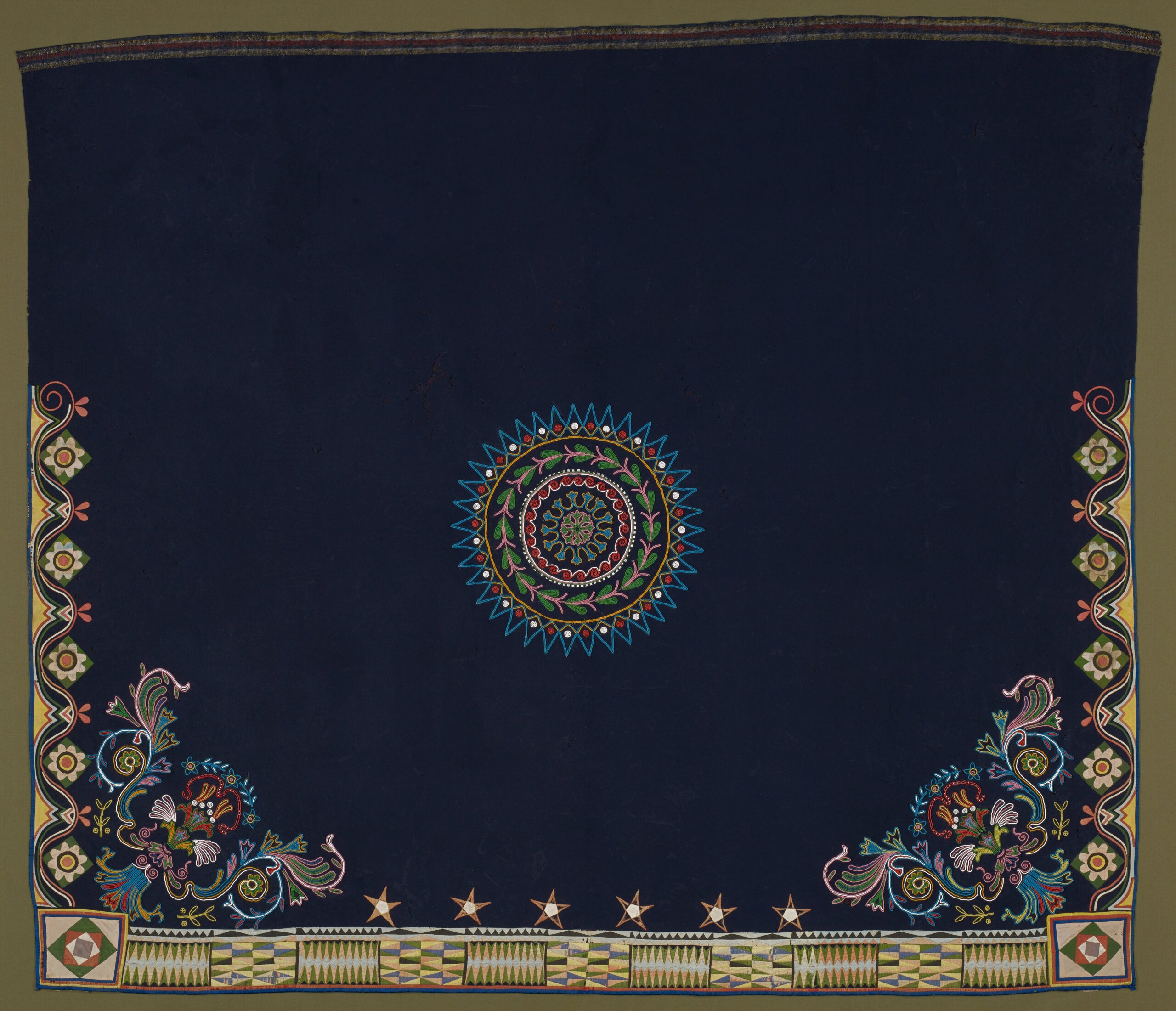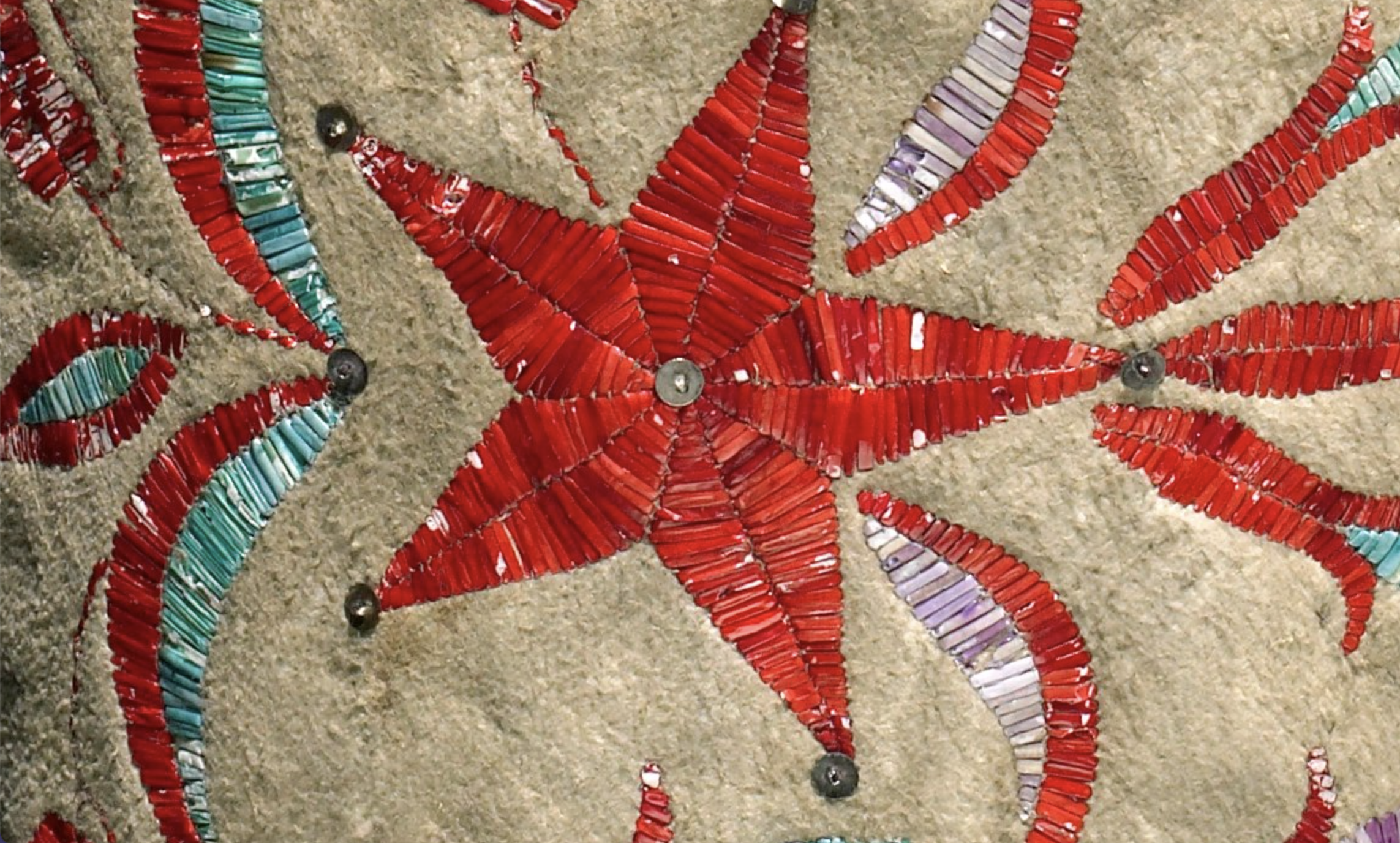By Alexandra Buffalohead //
I am honored to share some insights into the miniature curatorial project I’ve curated in Gallery 261 of Mia’s Americas collection. Jill Ahlberg Yohe, Associate Curator of Native American Art, had invited me to curate a case for an upcoming rotation of objects in the galleries. Jill has worked with other talented artists to curate cases like this, including Marlena Myles and Andrea Carlson, so I am really appreciative to be able to work with the collection and Mia’s team on this project.
I feel like I have a special bond with Mia. I’ve been a long-time visitor, from first-grade field trips—studying the Jade Mountain and creating our own paintings inspired by John Singer Sargent’s The Birthday Party—to being an Art major from Augsburg University, working on research projects and touring with different classes. Jill has been my professor at the University of St. Thomas, where I earned my Master’s, and I was an intern on the “Hearts of Our People” exhibition that she co-curated. We’ve worked closely in my professional career, too, at a partner organization at the Native American Community Development Institute (NACDI) and its All My Relations Arts gallery. Given this long history, I felt very overwhelmed by the possibilities.

James J. Hill Presentation Tray, Tiffany & Co., 1884. Silver. Gift of Mr. and Mrs. G. Richard Slade 81.5
In my museum studies classes, I became fascinated with Fred Wilson’s Mining the Museum project at the Maryland Historical Society in 1992—using a museum’s collection to confront and challenge perception and perspective of history. I thought that potentially this project offered an opportunity to use this inspiration, but with my own identity and with Mia’s collection. In recent years, I’ve noticed changes in various galleries at Mia that challenge how visitors see art, placing paintings by Native artist Jim Denomie, for example, in the galleries of American art circa 1900. However, I’ve felt puzzled by older labels for objects like the James J. Hill Presentation Tray and other works nearby that hint at historical context for this place called Minnesota or, to Dakota, Mni Sota Makoce.
I was inspired to juxtapose the James J. Hill Presentation Tray, made in 1884 by jeweler giant Tiffany & Co., with pieces made by Dakota artists around the same time, to show the work of artisans from different cultures in proximity to one another.
The tray is etched with an image of what settlers called St. Anthony Falls, on the Mississippi River. Dakota oyate (people) called the area Owamni Yomni—Whirlpool. (Owamni is now the name of a nearby restaurant and a summer arts and music festival.) In the river below the falls were several islands; only a few remain. Spirit Island, in particular, was sacred to the Dakota and was used by them as they traveled the river and as a place for birthing.

Cradle board cover, Dakhóta, c. 1880. Hide, quills, beads, ribbon, sequins, cloth. The Driscoll Art Accessions Endowment Fund 2003.162.2
I selected a Dakota cradleboard cover to showcase the impeccable talent of quilling with dyed porcupine quills. Growing up I had a few dolls that had cradleboards, which I was taught protected the babies by enabling the mother to wrap them and keep them close, on her back or nearby.
I was inspired by Chicago Kanza artist Chris Pappan, who created an intervention installation in the Field Museum’s Native American Hall a few years ago during its renovation. Pappan placed images or pieces of his own work in the installation, interacting with the objects while telling his own story. I was also heavily inspired by Andrea Carlson’s installation and projection work The Uncompromising Hand, created at the Upper St. Anthony Falls Lock & Dam in 2017. (You can read an interview with Andrea about it here.)
From this inspiration, I chose to print a photograph of Spirit Island, courtesy of the Hennepin History Museum, and place the image in front of the presentation platter to share another perspective— different from Mia’s traditional museum voice. Spirit Island was destroyed in 1960 by the Army Corps of Engineers, though some people may remember it or may have seen the remnants before the site was desecrated.
I also selected a newly acquired object, a beaded hymnal of Episcopalian songs translated into Dakota. My grandparents believe I am related to some of the translators who worked on the hymnal. For me, the only time I’m used to hearing hymns sung in Dakota is when attending funerals. In a time and year of mourning, when I have heard elders speak the language I immediately start crying (especially when everyone has had to self isolate). I think of this object as something that is cross-cultural and multi-spiritual. I believe there are Native relatives who might like to see this hymnal in person or at least find an easy way to connect with museum staff to talk about it, and I would invite them to fill out this survey to share their thoughts.
An important element of collaboration with this project has been asking language keepers and teachers Sisoka Duta and Clifford Canku to help translate a few hymns, to see—and hear—the difference between Dakota and English. Hearing Hark, the Herald Angels Sing in Dakota, I am grateful to Clifford for singing this song and to both Sisoka and Clifford for their help with the translations.

Dance blanket, Anishinaabe (Ojibwe) or Dakhóta, c. 1840-1850. Wool, silk, beads; needlework. The Robert J. Ulrich Works of Art Purchase Fund 2007.1
Lastly, the fourth object in this project is the Dakota/Anishinaabe dance blanket. This piece was selected as more of an aesthetic choice, to show another medium for art, and Jill suggested it would help tie things together visually. I believe it does, and I wanted to share these objects that show the love of our people for our children. That show our talent not only for song but visual art. Though these pieces are from the past, there are relatives who still have connections to them, who are still here, just as future generations will also be here.

